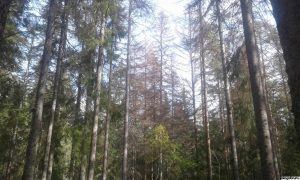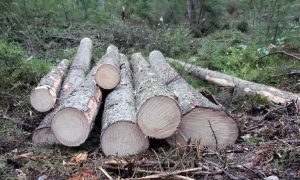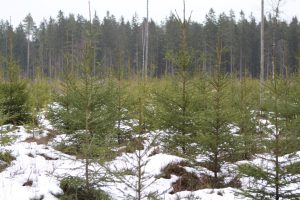On the 21st of April the European Commission adopted a package of measures to help improve the flow of money towards sustainable activities within the European Union, the EU. The target is to orient investments towards more sustainable technologies and businesses and make Europe climate neutral by 2050. Will that affect the forestry business?
EU Taxonomy
The EU Taxonomy is a part of an action program that partly can become a climate law in the future. The program is called the EU Green Deal. The idea is that the EU should be climate neutral by 2050.
The EU Taxonomy package is comprised of:
- The EU Taxonomy Climate Delegated Act aims to support investment by making it clearer which economic activities most contribute to meeting the EU’s environmental objectives.
- A proposal for a Corporate Sustainability Reporting Directive (CSRD). This proposal aims to improve the flow of sustainability information in the corporate world.
- Six amending Delegated Acts on fiduciary duties, investment and insurance advice will ensure that financial firms, e.g. advisers, asset managers or insurers, include sustainability in their procedures and their investment advice to clients.
The package was adopted on the 21st of April 2021 by the European Commission. After that, it will be scrutinized by the European Parliament and the Council for four months (and extendable once by two additional months if necessary).
Does it matter for us within forestry?
The Taxonomy aims to stimulate green investments in the industrial- and financial world. The reason for this, according to the European Commission, is that the concentration of carbon dioxide in the atmosphere must decrease. Growing forest is a very good way of catching and storing carbon through the photosynthesis. But that is not the only important thing about the forest, according to the Taxonomy.
The European forests must become more resistant against the climate changes that already are here. The warm and dry summer of 2018 affected large parts of central Europe. In some cases, the total growth failed for at least one season, which is a lot moneywise. A giant loss for the forest owners. Add to that, the increased risk for wildfire and bark-beetle attacks, that means that the forest catches less carbon, and you will see a challenging situation.
It is this kind of losses and risks that the Taxonomy aims to decrease with this new program. We are noticed that there is research on the dry summer of 2018 and that it unfortunately seems that this most likely will happen again.
Photo: Skogsforum.se
The forest owner’s perspective
The EU taxonomy aims at sustainable growth in a wide sense. Forestry is just a little piece of it. But for some countries, like Sweden, the forest industry is important. Not only for the forestry business (including forest owners) but for the country.
In Sweden there has been lots of discussions about the Taxonomy lately. Uncertainty and fear that the forest management will change. Expressions like “disaster” and “a matter of life and death for forestry and forest owners” has been seen in the debate. Considering this, the sister site iSkogen.se asked the EU Commission about this.
Photo: Fredrik Reuter
The EU Commission replies
The EU Commission considers the forest as an important resource in climate change. The EU Taxonomy is, for the forest owner, a volunteer framework. There are no demands to adapt to the framework and the Taxonomy does not demand “felling stops” or similar. According to the Commission, it is on the contrary stated in the Green Deal that increased use of wood in buildings should be stimulated. Concrete and other building materials should be replaced by wood as far as possible. It is however important that present and future forests will become more resistant to climate change.
One should have in mind that the Taxonomy is meant mainly to be an affecting force. Companies’ and organizations’ reputation and brands should be so important that they can´t afford not to adapt to the Taxonomy. Even though the Commission doesn´t write it clearly, you can read between the lines that those who doesn´t adapt to the Taxonomy, and govern their business toward sustainable growth, risks getting a “brown stamp”.
If you choose to adapt your forestry to the Taxonomy, you will have to do a so-called climate utility analyses of your forest land, if the forest land is more than 13 hectares. To be approved, the analyses must show that your “new” forestry stores more carbon than before. Here, a forest management plan could be a good reference.
There are similarities the Taxonomy and the FSC and PEFC certification standards. So, if you have a certified forest, it will be much simpler to adapt to the EU Taxonomy. That is if you want to do that.
Photo: Per Jonsson
What´s in it for the forest owner?
Probably the most important question: What will a forest owner who chooses to adapt to the Taxonomy gain from that? Our interpretation of what the Commission writes is that you will get a verification of that your forestry is adapted to the Taxonomy. The verification can be used, e.g., to sell your net carbon storage on a carbon commodity exchange, like Puro.Earth. “Carbon farming” is a concept used within this area. The above-mentioned climate utility analyses will contain facts about how much carbon your forest stores during a certain time frame.
In their reply to iSkogen.se, the EU Commission inform that a major investigation is going on that aims to create a certification system for forest owners that verifies their carbon storage. Through this, it will be possible in the future to let forestry into the emission trading system EU/ETS.
We mentioned recently in an article that Germany is investigating a system where forest owners can get paid for storing carbon in their forest. It is however unclear if this has any connection to the EU Taxonomy. If not, it is quite a coincidence.
Conclusion
If this first part of the Taxonomy will be approved, it will come into effect on the 1st of January 2022. By then, the hope is that a certification system that make it possible for forest owners to sell carbon storage is up and running. We will have to get back about that …
In the press release from 21st April, you can among other things read this:
“The proposal will also simplify the reporting process for companies. Many companies are currently under pressure to use an array of different sustainability reporting standards and frameworks. The proposed EU sustainability reporting standards should be a “one-stop-shop”, providing companies with a single solution that meets the information needs of investors and other stakeholders.”
To claim that they wish to simplify the process for, in our case, the forest owners and forest contractors by adding yet another certification to the already existing ones seems strange to say the least. If the message was “Join the Taxonomy and get rid of FSC, PEFC and others” it would be ok, even helpful perhaps. But as I understand, this will only mean more bureaucracy for all involved and with limited benefit for the forest owner.
The Taxonomy is meant to be an “affecting force”, but volunteer, just like the FSC- and PEFC standards. But by the end of the day all involved will have to join to save their business, just like with the FSC- and PEFC standards.
It seems to me that an overall principle like the EU Taxonomy will be difficult to cope with as it covers so many different industries that operate under different conditions. If the Taxonomy could replace all the other certifications most would think it´s ok, but I doubt that will happen.
Generally, the idea to stimulate companies to invest toward sustainability is good. But you shouldn´t hit the small companies, like private forest owners and forest contractors, in first hand.
This is a summary of an article at iSkogen.se signed Fredrik Reuter.
Sources: The EU Commission, iSkogen.se














